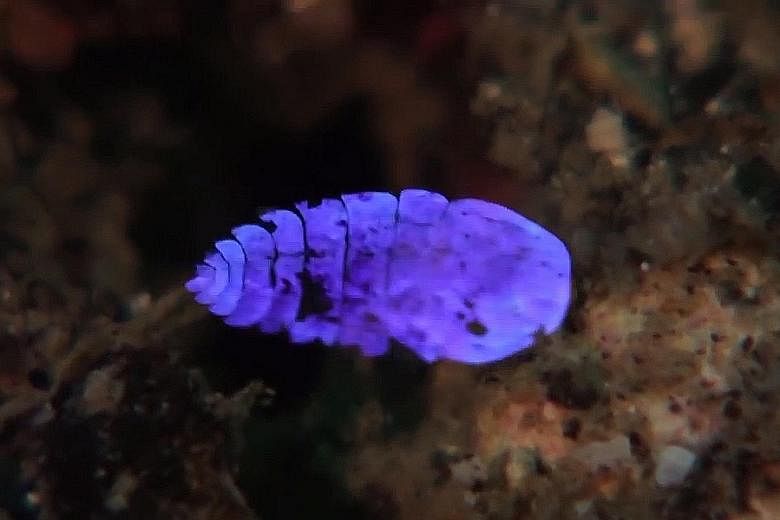Sea sapphires, such as the one pictured here, are ocean creatures that "glitter" underwater - taking on splendid iridescent shades of blue, purple or green one moment, and turning near invisible the next. They measure from one to several millimetres in length, and are known scientifically as Sapphirinidae. They belong to a sub-class of crustaceans called copepods. The male Sapphirinidae has striking, iridescent colours while the female is transparent.
Scientists from Israel's Weizmann Institute of Science have found how these creatures get their colour, and what makes them "disappear". The answer lies in the way light is reflected off the crystal layer - made of thin, transparent crystals of guanine - on the backs of the male of several species. Guanine is a nucleic acid base found in DNA. Its colour depends on the spacing between the guanine plates on the organism's back. The closer the plates are to one another, the shorter the wavelength, that is, the bluer the light, reflected.
This finding was reported in the Journal Of The American Chemical Society and could inspire the development of new optical technologies.

